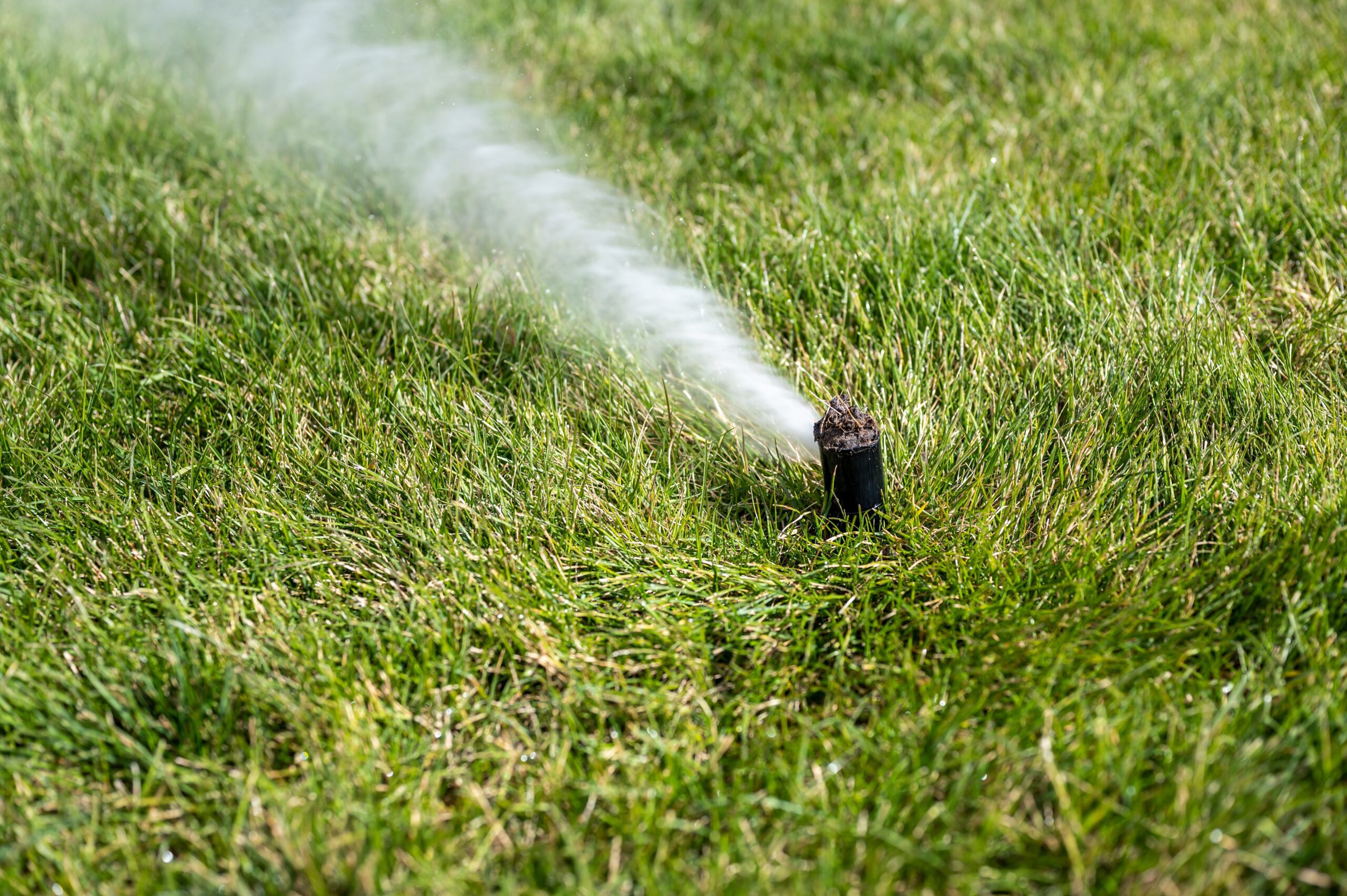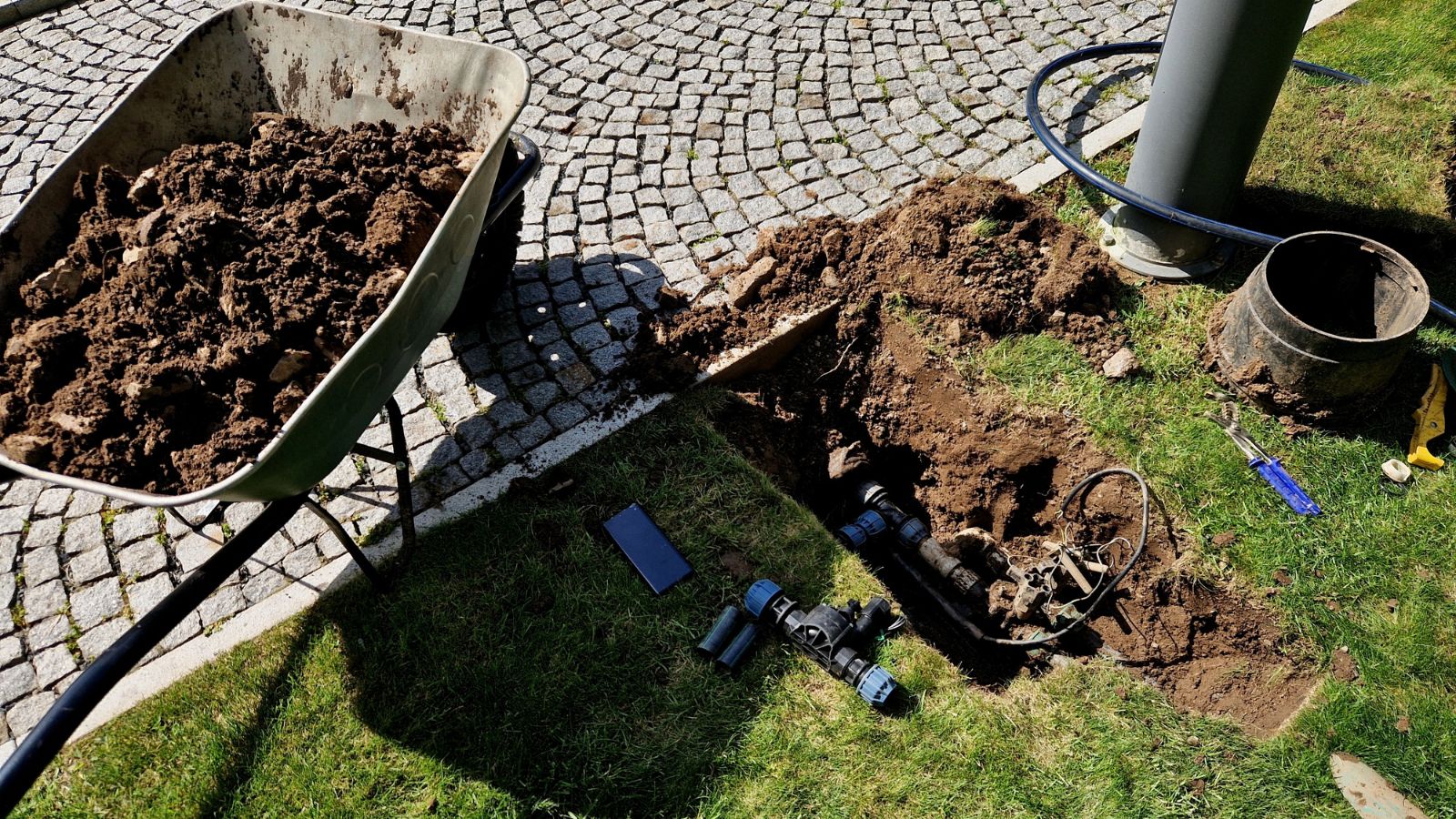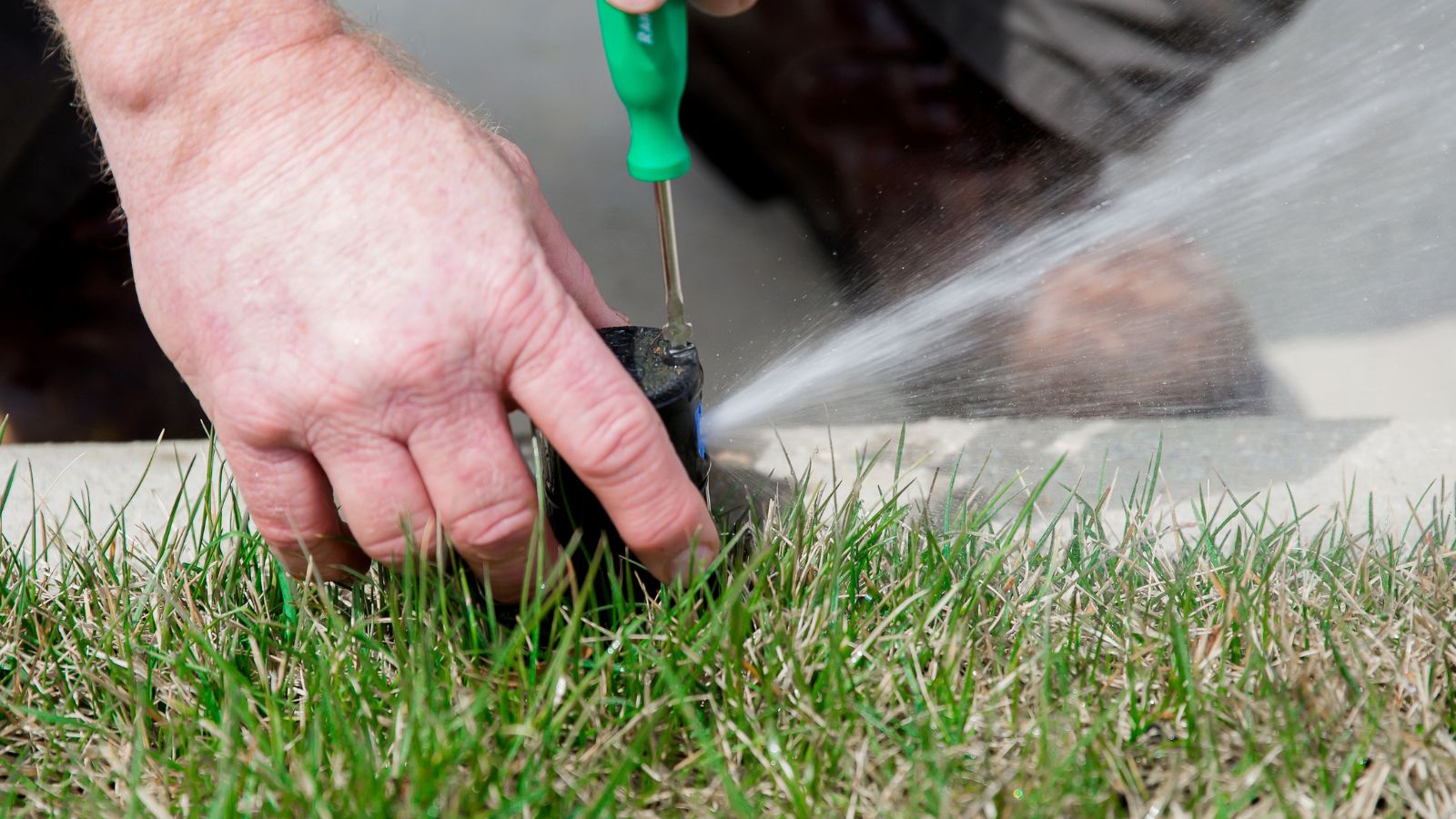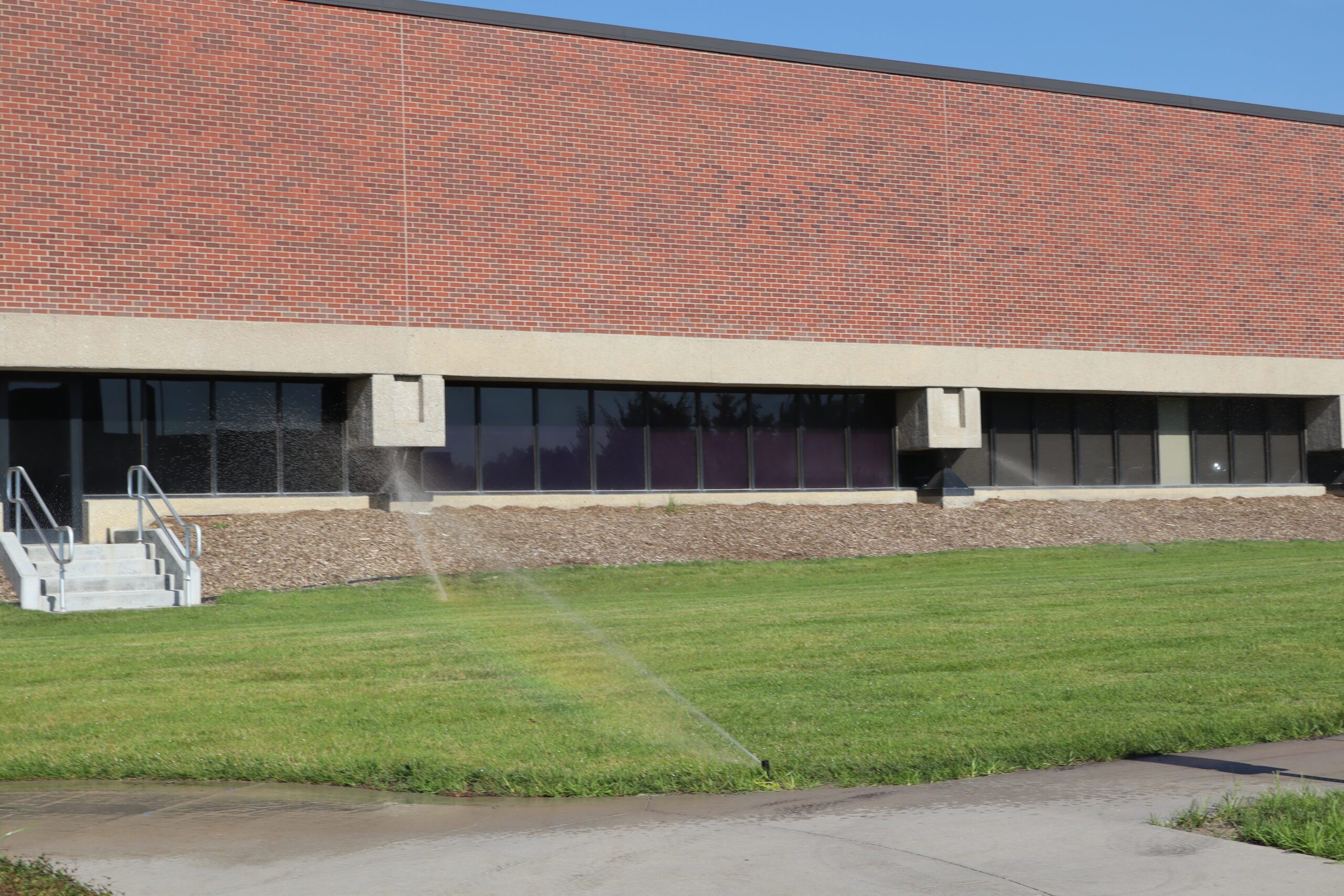Scheduled maintenance is a key factor in making a sprinkler system last longer. Regular checkups catch small problems early, preventing expensive repairs and sudden failures. This helps the system work efficiently and saves water over time.
Creating and sticking to a maintenance schedule keeps all parts of the sprinkler system in good condition, improving its lifespan and reliability. This includes inspecting sprinkler heads, checking for leaks, and cleaning filters. These simple tasks help avoid bigger issues that wear out the system faster.
By practicing planned maintenance, the sprinkler system runs smoothly year after year. It protects the homeowner’s investment and ensures lawns and gardens get the water they need without waste or damage.
How Scheduled Maintenance Extends Sprinkler System Life
Understanding Sprinkler System Lifespan
A sprinkler system’s lifespan depends on many factors, such as its design, materials, and maintenance. Different parts wear out at different rates. Knowing what affects longevity and what causes failures helps users plan maintenance and replacements.
Factors Affecting Sprinkler System Longevity
Several factors influence how long a sprinkler system remains efficient and functional:
- Material quality: Systems built with high-grade materials, such as PVC, last far longer and resist damage better than those made with low-cost plastics. Cheaper materials tend to crack, warp, or wear out faster under pressure and environmental stress.
- Installation quality: Professionally installed systems operate smoothly for years with minimal issues, while poorly installed ones often face early leaks, uneven water flow, and clogs. Precision installation ensures long-term efficiency, reducing the need for frequent repairs.
- Environmental conditions: Systems in mild climates or with soft water experience slower wear and fewer mineral deposits than those exposed to hard water, heat extremes, or compacted soil. Tough environmental conditions accelerate corrosion and pipe degradation.
- Regular maintenance: Systems that undergo routine inspections and part replacements tend to last considerably longer, whereas neglected systems often develop leaks and corrosion, which can significantly shorten their lifespan.
- Weather and physical exposure: Protecting the system from freezing conditions and lawn equipment prevents early damage and prolongs use. Harsh weather, direct sunlight, or repeated physical impact can weaken pipes and fittings.
Common Causes of Premature Failure
Sprinkler systems often fail early due to poor maintenance or environmental stress. Leaks are one of the most frequent causes. Leaking pipes waste water and cause pressure problems that strain other components.
Clogged or damaged sprinkler heads reduce coverage and efficiency. Dirt, roots, or insects can block nozzles and valves. Damage from lawn mowers or foot traffic also causes premature failure.
Ignoring sprinkler system maintenance worsens small issues. Valves that don’t close fully or broken wires in automatic systems can lead to malfunction and increased wear. Freeze damage is common in colder climates if winterization steps are skipped.
Expected Service Life of Major Components
Sprinkler system parts last different amounts of time. On average:
- Sprinkler heads: 5 to 10 years
- Valves: 7 to 15 years
- Pipes and tubing: 20 or more years with proper care
- Controller: 10 to 15 years, depending on model and environment
These ranges assume regular maintenance and no major damage. Components exposed to soil movement or chemical fertilizers may need replacement sooner.
Routine inspection and timely part replacement keep the system running efficiently and avoid sudden failures. Understanding these lifespans helps with budgeting repairs and upgrades.
Role of Scheduled Maintenance in Longevity
Scheduled maintenance keeps sprinkler systems working properly for a longer time. It targets issues early and ensures every part functions as designed. This approach helps avoid sudden failures, keeps water flowing efficiently, and reduces damage over time.
Preventing Costly Breakdowns
Scheduled maintenance plays a crucial role in extending the life and efficiency of a sprinkler system by addressing issues early and keeping all components in optimal condition.
- Preventing costly breakdowns: Routine checks of valves and pipes help detect leaks or blockages before they worsen. Prompt repairs and part replacements prevent water damage, reduce emergency repair costs, and keep the system dependable.
- Maximizing efficiency through routine care: Cleaning sprinkler heads, testing water pressure, and ensuring proper flow improve system performance. Balanced watering prevents waste and dry spots, ensuring consistent, efficient coverage.
- Minimizing wear and tear: Lubricating and replacing parts on schedule reduces friction, rust, and cracking. Consistent upkeep limits stress on components and helps maintain steady operation over the system’s lifespan.
Essential Scheduled Maintenance Tasks
Proper maintenance requires checking all parts of the system regularly. This includes inspecting components, cleaning clogged areas, finding leaks, and adjusting settings. Each step improves water use and keeps the sprinkler working well for a longer time.
Regular Inspection and Testing
Scheduled maintenance includes regular inspections that go beyond surface checks to ensure every component operates properly. During each inspection cycle, users should look for worn parts, misaligned or broken sprinkler heads, and any visible damage in pipes, fittings, or wiring. Running each irrigation zone helps verify that water distribution is even and that pressure remains consistent across the system.
Checking the controller is an essential part of scheduled maintenance. Its settings should align with current weather patterns and seasonal needs to avoid overwatering or dry spots. Inspecting buttons, sensors, and display screens ensures the system responds correctly to programming, keeping irrigation efficient and preventing unnecessary water waste.
Cleaning and Flushing Components
Sprinkler heads and filters often collect dirt and debris, which can block water flow. Cleaning involves removing dirt from sprinkler nozzles and screens so water sprays properly. Flushing the system means running water through pipes at high pressure to clear out buildup, such as sand or mineral deposits.
This process helps avoid low water pressure and uneven spray patterns. It is especially important after winter or if the water supply has high mineral content. Clean parts save energy and keep plants healthy by providing consistent watering.
Checking for Leaks and Obstructions
Leaks cause water waste and reduce system pressure. Regular checks include examining all pipes, valves, and sprinkler heads for wet spots or mud buildup that may signal a leak. Small leaks can lead to bigger breaks if left unrepaired.
Obstructions such as plants growing over sprinkler heads or dirt blocking nozzles also reduce efficiency. Removing these blockages ensures full coverage and stops dry spots in the lawn or garden.
System Calibration and Adjustment
System calibration means adjusting sprinkler heads to water only the intended areas. Heads should be aimed correctly to avoid watering sidewalks, driveways, or buildings. Adjusting the spray radius and pattern helps save water and prevents damage to hard surfaces.
Timing settings must also be adjusted regularly based on weather and plant needs. This prevents overwatering in rainy seasons and ensures enough water during dry times. Calibrated systems run efficiently, saving money and extending component life.
Seasonal Maintenance Considerations
Maintaining a sprinkler system throughout the year requires specific tasks for each season. These help protect the system from damage, improve performance, and reduce repair costs. Paying attention to seasonal changes ensures the sprinkler system works efficiently and lasts longer.
Winterization and Freeze Protection
Before winter, the sprinkler system must be drained or blown out to remove water from pipes and heads. Water left inside can freeze, causing pipes and valves to crack.
Shutting off the water supply and draining any remaining water prevents damage. In colder climates, covering exposed components or using insulation can protect equipment from freezing temperatures.
Checking the system for leaks and making repairs before winter is crucial. Valves, pipes, and sprinkler heads should be clean and intact to avoid problems when the system restarts in spring.
Spring Start-Up Procedures
Spring is the time to prepare the system for regular use. Inspect all sprinkler heads for damage or clogs, and clear any debris to ensure even water coverage.
Testing each irrigation zone helps identify leaks or areas that need adjustment. Adjust sprinkler heads to cover the lawn properly without overspray onto sidewalks or driveways.
Valves and controllers should be checked for functionality. Reset timers according to new seasonal needs and check for any wiring or electrical issues.
Summer Performance Checks
Summer demands more from a sprinkler system due to higher temperatures and drier conditions. Regular checks help maintain efficiency and save water.
Inspect nozzles for clogs or wear and clean or replace them if needed. Adjust watering schedules to match weather changes, ensuring the lawn gets enough water without waste.
Monitor water pressure to avoid damage to pipes and sprinkler heads. Check for leaks, especially around joints and connections.
Fall Preparation Steps
Fall preparation helps avoid system damage during colder months and prepares the system for winter. Begin by adjusting watering schedules as temperatures drop to prevent overwatering.
Inspect all components for wear and tear. Replace any broken or worn-out parts, such as sprinkler heads, pipes, and valves, before winter sets in.
Clean the irrigation system by removing leaves, dirt, and other debris from heads and filters. This reduces clogs and improves system function.
Turn off the water supply and perform the winterization process to protect the system from freezing once the temperatures consistently drop below freezing.
Signs Maintenance Is Needed
A sprinkler system shows clear signs when it requires maintenance. These signs help prevent bigger problems by identifying issues early. Key indicators include changes in water flow, strange noises or visible damage, and uneven watering across the landscape.
Reduced Water Pressure
When a sprinkler system’s water pressure drops, it usually means there is a blockage or leak. Low pressure can cause sprinklers to spray weakly or unevenly, leaving parts of the lawn dry.
Possible causes include clogged nozzles, broken pipes, or damaged valves. Pressure checks can reveal if the system is losing water before serious damage occurs.
Regular inspection and cleaning of filters and nozzles help maintain proper pressure. Addressing leaks quickly also prevents water waste and higher bills.
Unusual Noises or Visual Damage
Uncommon sounds, like hissing, banging, or sputtering, often point to problems in the sprinkler system. These noises might come from leaks, faulty valves, or broken pipes.
Visual signs include cracked sprinkler heads, rust, or water pooling around system components. Such damage can disrupt performance and waste water.
Spotting these issues early allows for timely repair, which keeps the system running smoothly and avoids larger repair costs.
Irregular Water Distribution
If some lawn areas are dry while others are soggy, the lawn sprinkler system might be watering unevenly. This irregularity occurs due to misaligned heads, clogged nozzles, or zone timing errors.
Uneven watering creates dry patches that damage grass and plants. It also risks overwatering, which can cause root rot or waste water.
Regular checks ensure each zone receives the correct water amount and that sprinklers aim correctly. Adjustments and cleaning improve uniform coverage and lawn health.
Benefits of Professional Maintenance Services
Professional maintenance improves sprinkler system reliability and efficiency. It ensures early problem detection, adherence to rules, and saves money by avoiding big repairs later.
Expert Diagnostic Capabilities
Professionals use specialized tools to check sprinkler heads, valves, and pipes. They identify leaks, blockages, or worn parts that may not be visible to homeowners.
Regular inspections help detect small issues before they cause system failure. For example, they can find areas where water pressure is too high or too low. Adjusting these prevents damage and uneven watering.
Technicians also recalibrate sprinkler heads for precise water coverage. This reduces waste and keeps the landscape healthy. Expert diagnostics extend the system’s useful life by maintaining optimal performance.
Compliance With Local Regulations
Sprinkler systems must follow local water use laws, especially in areas with drought risks or water restrictions. Professionals stay updated on these rules to keep their system legal.
They adjust watering schedules and system settings to meet local guidelines. This avoids fines and ensures water is used responsibly.
Following regulations also helps conserve water, which benefits the environment and reduces utility bills. Professional service prevents accidental overwatering or misuse of irrigation resources.
Long-Term Cost Savings
Hiring experts for regular maintenance reduces repair costs over time. They fix issues early, preventing major breakdowns that require expensive parts or system replacement.
Proper system tuning improves water efficiency and lowers water bills. It also reduces wear on components, extending their lifespan.
Investing in maintenance is less costly than emergency sprinkler repairs. Scheduled service protects the sprinkler system’s value and functionality for years, saving money in the long run.
Implementing a Maintenance Schedule
A good maintenance plan sets clear times for inspections and repairs. It also keeps track of what work is done and helps organize communication with professionals. This ensures the sprinkler system works well over time.
Creating an Effective Maintenance Calendar
A maintenance calendar lists all necessary tasks by date and season. It should include regular inspections, cleaning, and part replacements. For example, checking sprinkler heads monthly and testing the system pressure quarterly helps catch problems early.
Using a simple chart or digital reminder makes it easier to follow the schedule. Prioritize tasks based on the system’s age and climate needs. Mark down critical checks, such as valve leaks or controller updates.
Clear dates prevent missed maintenance, which can cause damage or reduce system life. Keeping the calendar updated with notes also helps adjust the plan if problems arise.
Tracking Service Records
Service records document every inspection, repair, and replacement. They provide a history of what work has been done and when. Keeping detailed notes on problems found and fixed can guide future maintenance decisions.
Records should include dates, who performed the service, parts used, and any costs. This information helps identify patterns, like recurring leaks or worn parts.
Organizing records in a file or spreadsheet makes it easy to find past work details. This helps with warranty claims and verifying that maintenance meets local safety codes.
Coordinating With Service Providers
Working closely with professionals ensures expert help is timely and effective. Scheduling regular visits with contractors or technicians can prevent system failures.
Clear communication about past issues and maintenance history helps providers focus on problem areas. Sharing the maintenance calendar and records allows them to prepare and bring the necessary tools or parts.
Establishing a routine contract or agreement can also save money by avoiding emergency calls. Regular checkups with experts provide peace of mind and help maintain sprinkler system safety and function.
Pioneer Underground Lawn Sprinklers | Sprinkler System Repairs and Maintenance Omaha, NE
Contact Pioneer Underground Lawn Sprinklers to schedule a free estimate on a system install or to find out what you can do to make your existing system more efficient. We welcome commercial and residential clients. And remember, whether you need our services now… or later in the season, Your Healthy Lawn is Our Passion, and we are only a phone call away.






